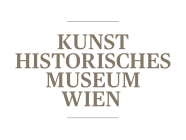File:A jug with golden medallions.jpg

Dimensioni di questa anteprima: 400 × 599 pixel. Altre risoluzioni: 160 × 240 pixel | 320 × 480 pixel | 513 × 768 pixel | 684 × 1 024 pixel | 1 862 × 2 788 pixel.
File originale (1 862 × 2 788 pixel, dimensione del file: 5,19 MB, tipo MIME: image/jpeg)
Cronologia del file
Fare clic su un gruppo data/ora per vedere il file come si presentava nel momento indicato.
| Data/Ora | Miniatura | Dimensioni | Utente | Commento | |
|---|---|---|---|---|---|
| attuale | 19:30, 6 apr 2016 |  | 1 862 × 2 788 (5,19 MB) | Dencey | new |
| 19:33, 30 gen 2014 |  | 1 862 × 2 788 (3,32 MB) | Jdsteakley | User created page with UploadWizard |
Pagine che usano questo file
La seguente pagina usa questo file:
Utilizzo globale del file
Anche i seguenti wiki usano questo file:
- Usato nelle seguenti pagine di en.wikipedia.org:
- Usato nelle seguenti pagine di hu.wikipedia.org:
- Usato nelle seguenti pagine di ja.wikipedia.org:
- Usato nelle seguenti pagine di ro.wikipedia.org:
- Usato nelle seguenti pagine di sl.wikipedia.org:
- Usato nelle seguenti pagine di zh.wikipedia.org:




